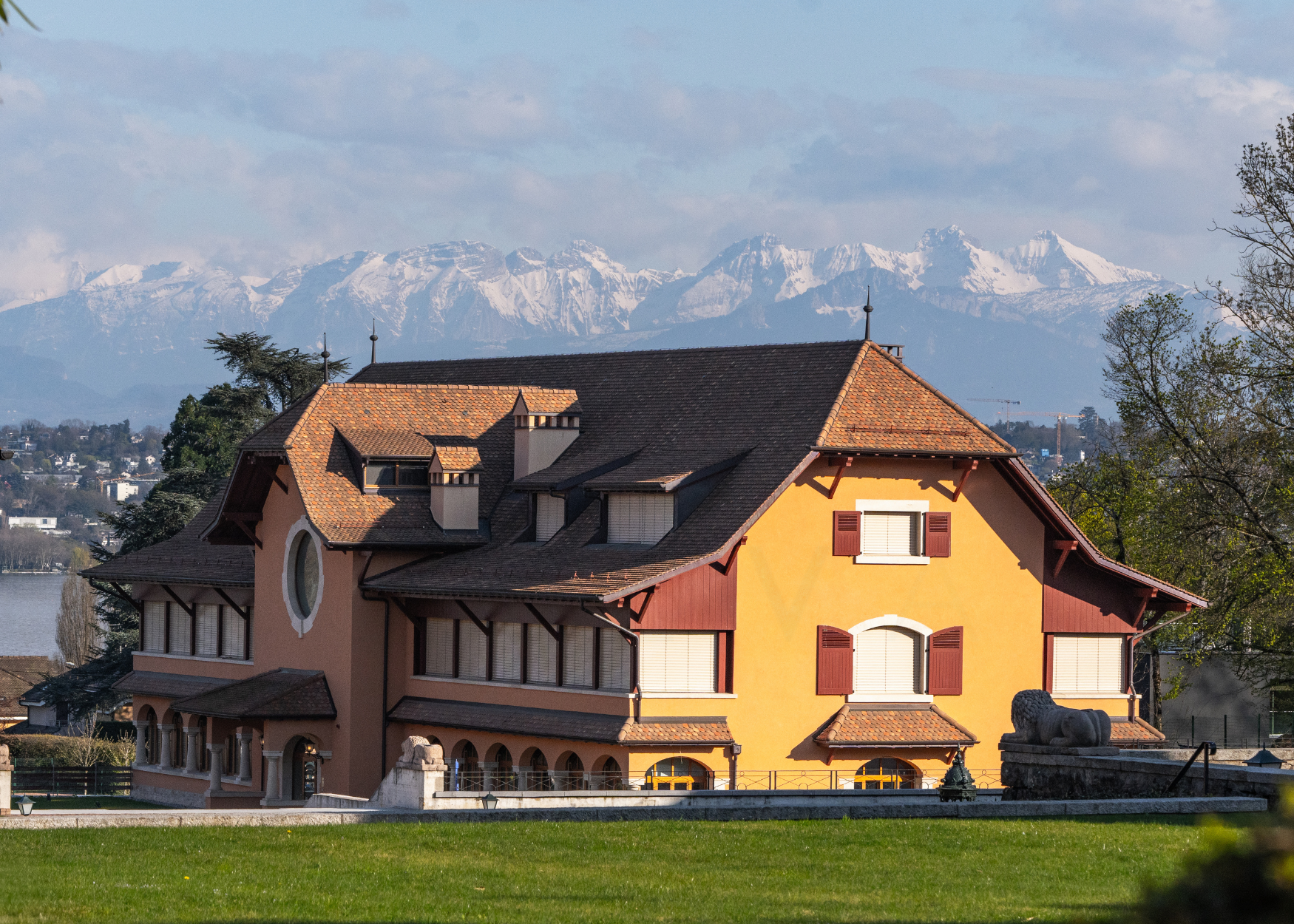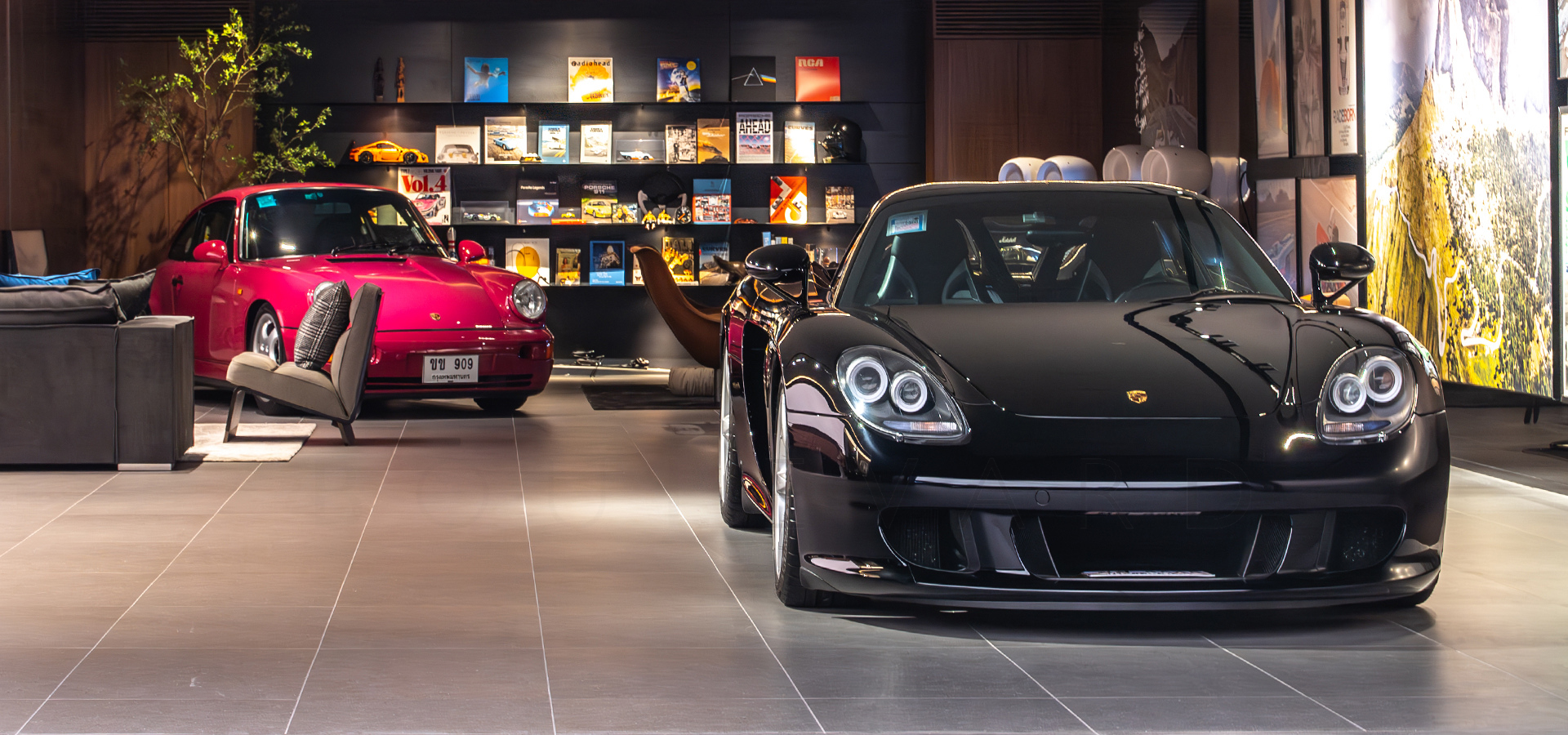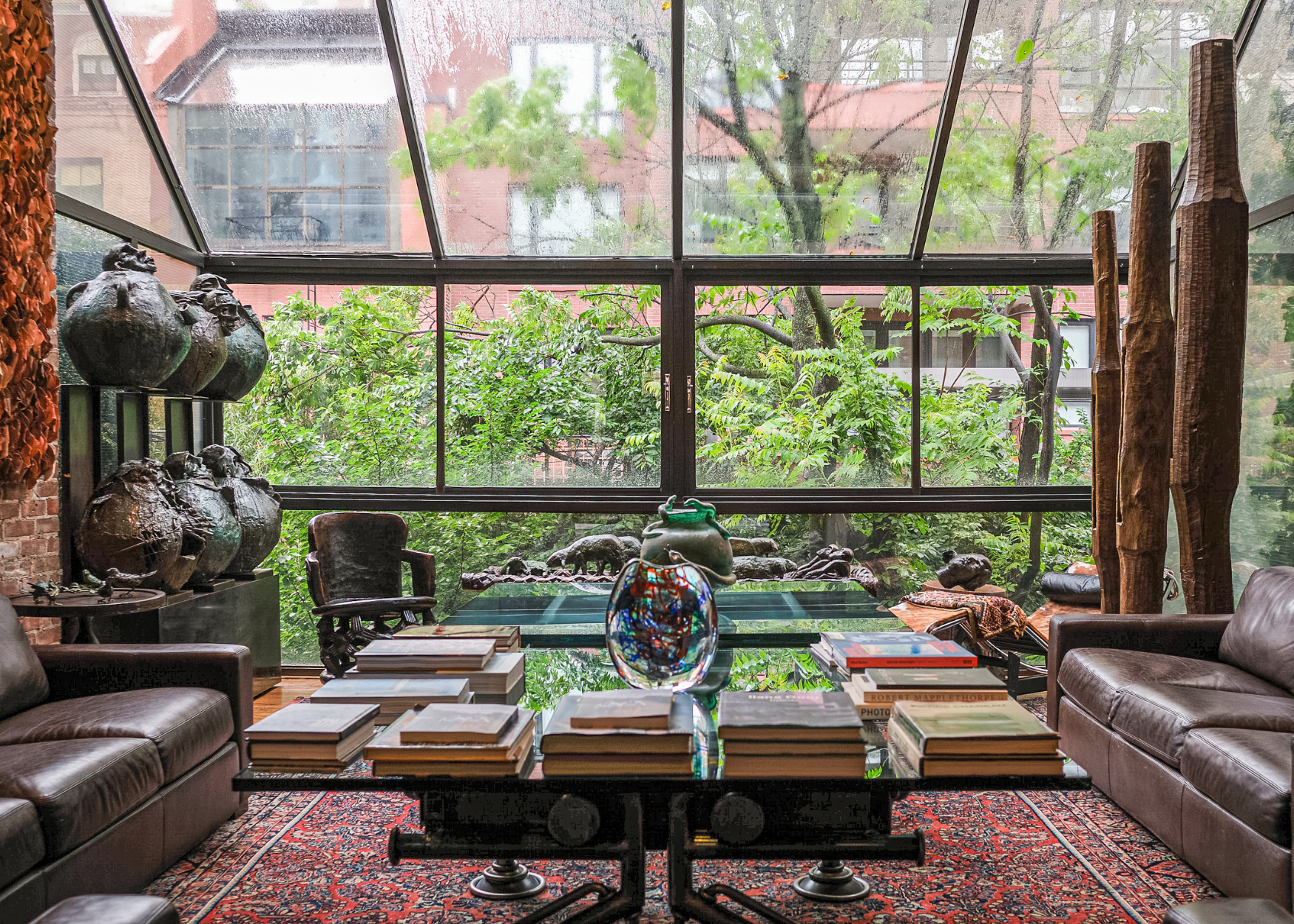The interview: Franck Muller’s Nicholas Rudaz reveals the stories behind the brand’s bold new novelties and takes us inside Watchland
by Hamish McDougall
Photography by Kevin Khng
Founded in 1991, at a time when the Swiss watch industry was still finding its footing after the quartz crisis, Franck Muller burst onto the scene with a rebellious spirit and a flair for the unconventional. Co-founded by maverick watchmaker Franck Muller and diamond specialist Vartan Sirmakes, the maison quickly made a name for itself with its bold, baroque style—think colourful dials, flamboyant numerals, and signature tonneau-shaped cases that curved around the wrist. But beneath the theatrical aesthetic lay serious mechanical muscle, with complications like the whimsical Crazy Hours showcasing the brand’s knack for marrying technical mastery with playful irreverence.
Today, the brand remains independent, designing and producing its timepieces at Watchland, a sprawling complex overlooking Lake Geneva. This setting is also home to the World Presentation of Haute Horlogerie (WPHH), Franck Muller’s private watch fair, now in its 35th edition. For CEO Nicholas Rudaz, this combination of in-house production, creative freedom and a willingness to challenge tradition is what keeps the brand evolving.
In this conversation with Boulevard, Rudaz shares the story behind the brand’s most iconic designs, discusses its new novelties, and explains why craftsmanship, colour and character remain central to Franck Muller’s identity.
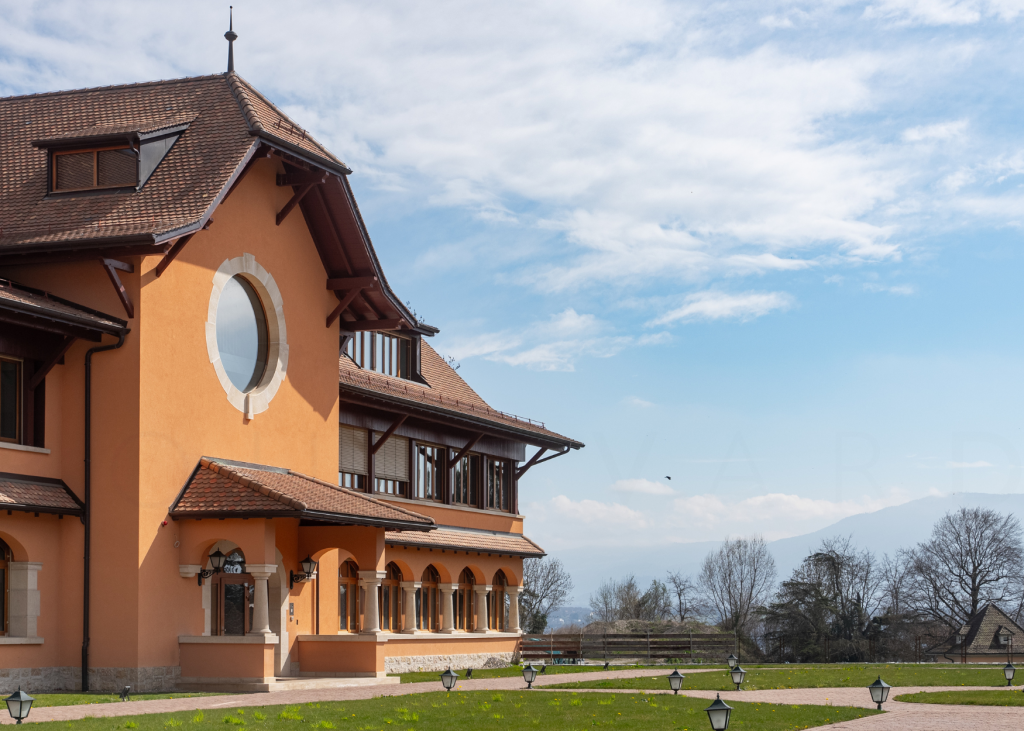
Franck Muller Watchland in Geneva, Switzerland.
Boulevard: How did the Franck Muller brand come to life and what makes it different from other watch brands?
Nicholas Rudaz: Franck Muller has always been very bold in its approach—from complications, designs, colours and the use of diamonds. One of our co-founders, Vartan Sirmakes, was a diamond setter by trade. He met Franck Muller, a prodigious watchmaker, and together they set out to create timepieces on a much greater level. That founding vision continues to define the brand today—boldness, innovation and a distinct identity.
Blvd: How does that translate into some of your personal favourite pieces from past collections and what are the signatures?
Rudaz: That’s always a tricky question because it’s like asking which one is your favourite child. But we have such a vast collection, and for me, the one that summarises all the DNA of Franck Muller is the Crazy Hours.
The Crazy Hours is a wonderful complication that we presented 22 years ago, and it consists of a jumping hour. Franck Muller was the first to play with this complication, and he decided to put the numbers in a different way.
It’s not just a watch, but it’s a piece of art. It’s poetry, mechanics and steel, all coming together in harmony. Many people compare the art of watchmaking to art itself, and with the Crazy Hours, that comparison truly comes to life.
“The Crazy Hours is not just a watch, but it’s a piece of art. It’s poetry, mechanics and steel, all coming together in harmony.”
Blvd: What inspired the concept behind the Crazy Hours complication?
Rudaz: Franck Muller was inspired to create the Crazy Hours during a New Year’s Eve celebration with his family in Mauritius. They were staying at a five-star hotel, surrounded by guests dressed formally, everyone quite proper and unfamiliar with one another. Despite the reserved atmosphere, Franck was having a great time—enjoying the food, the drinks and the moment. At some point, perhaps after a few glasses, he decided to shake things up and jumped into the pool, encouraging others to do the same.
It was a moment of spontaneous joy and freedom. The next morning, slightly hungover but still energised by the night before, he thought to himself, ‘I have to do something crazy, something different.‘ That’s when the idea for the Crazy Hours—and its unconventional jumping hour complication—began to take shape.
The jumping hour complication is actually a very old one, but no one other than Franck Muller was able to do such a fun and emotional complication.
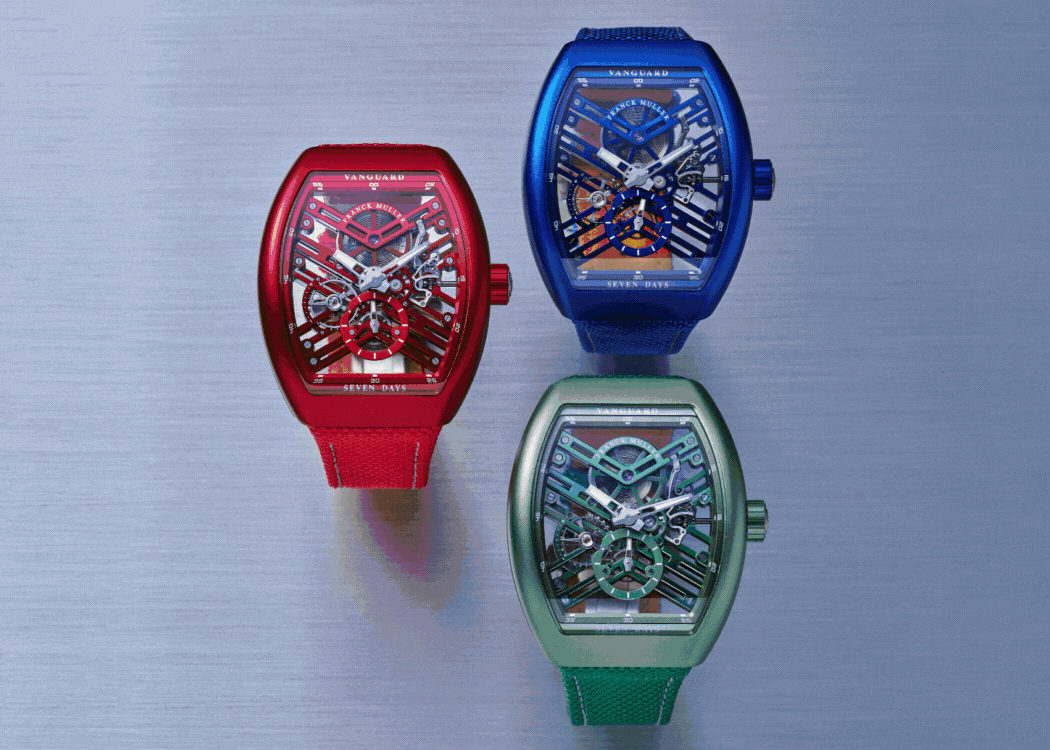
Vanguard Royal Bauxite, Round Triple Mystery, Vanguard Sfumato Slim, Crazy Hours Jisbar and Vanguard Curvex Cut Flower, all by Franck Muller.
Blvd: Sheer creative artistry, boldness, jewellery—how do these brand pillars translate into Franck Muller’s current identity and into its latest collection?
Rudaz: Well, first of all, let me take you back to when Franck Muller was just 15 years old and studying watchmaking in Geneva. After only a year, he was awarded the prize for best student in his class—and received a Rolex as a reward. Now, most teenagers would either treasure it or sell it to buy a motorbike, a guitar or fund an adventure. But Franck did something entirely different. He disassembled the Rolex, added a Quantième Perpétuel complication, and then sold it at a premium. That moment captures exactly what defines our brand today—a passion for innovation, bold creativity and a fearless approach to pushing the boundaries of watchmaking.
This same ethos is evident in the brand this year, as we welcome everyone to the 35th edition of the World Presentation of Haute Horlogerie (WPHH). We’ve been doing our WPHH since 1996, which is one of the oldest watch fairs in Geneva. The event takes place on our own premises, with the manufacture just next door—a unique setting where guests can discover our latest creations fresh from the exhibition floor.
One of our latest creations is with a wonderful new ladies’ watch called the Vanguard Curvex Cut Flower, with a skeleton structure and equipped with an in-house movement. It displays green flowers made with emeralds, which are shaped just like our Curvex watches. This is a cut that is patented by Franck Muller. It’s stunning, very elegant and feminine, which has everything for the female watch collector.
We also have the Vanguard Sfumato Slim, available in new colours, comes in a 41mm or 43mm case, and is also equipped with an in-house movement. It’s slimmer, curved and more comfortable on the wrist.
Another new novelty is the Triple Mystery, which is a timepiece that doesn’t have hands, it only has discs. It is inspired by the Double Mystery, one of our best sellers. This new iteration has three discs displaying the hour, minutes and now the seconds inside the middle. It is more than a wristwatch—it is a beautiful piece of jewellery with a beautiful open back and engraved movement. It’s available in white gold and pink gold, set with diamonds and different gemstones.
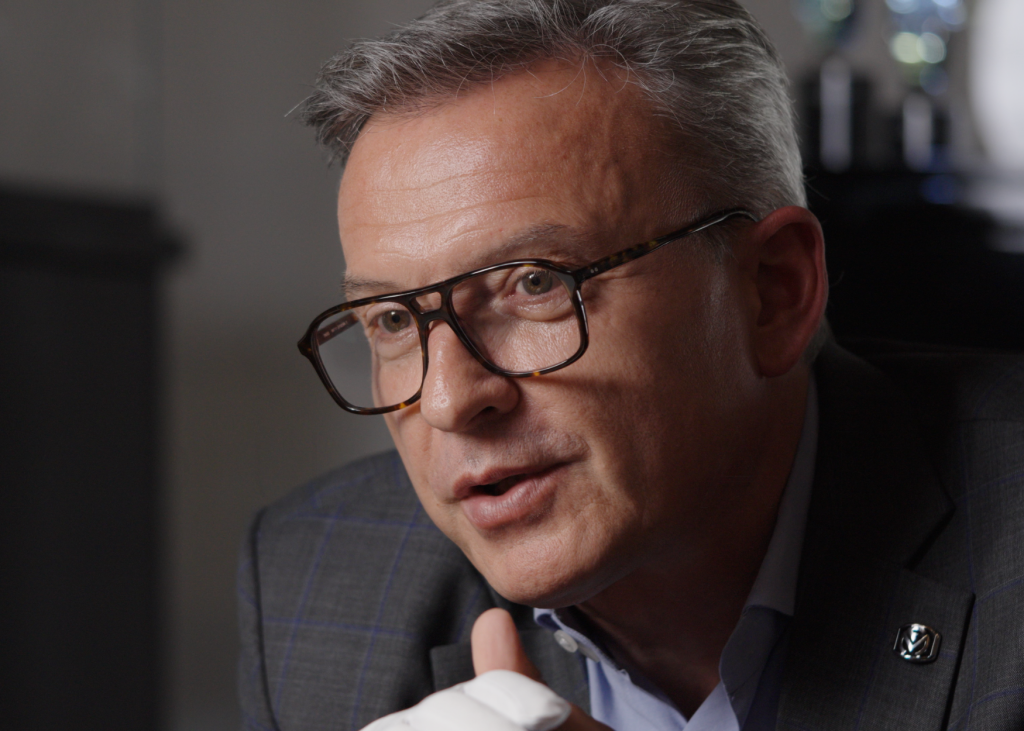
Nicholas Rudaz, CEO of Franck Muller.
For the men’s collection, we’re introducing the Royal Bauxite series—a sportier design featuring a stunning skeleton dial and a seven-day power reserve, all crafted entirely in-house. The case and movement incorporate aluminium, and a blend of other minerals, resulting in an exceptionally strong material. What’s remarkable is that this material isn’t just used for the exterior, it’s also integrated into the movement itself, with components made from aluminium. We’ve taken it a step further by rendering it in bold, vibrant colours—a nod to Franck Muller’s Color Dreams heritage. As the first brand to introduce colour in haute horlogerie, we’re proud to continue that legacy without hesitation.
Blvd: Do you see these expressions of Franck Muller as having different personalities, yet all within the same character?
Rudaz: Well, we always like to put that extra je ne sais quoi inside each watch, be it the complication, colour, diamonds, stones or baguettes. So people who wear a Franck Muller are those who want to be a little bit different—who want to stand out.
“We’ve been doing our WPHH since 1996, and it takes place on our own premises—a unique setting where guests can discover our latest creations fresh from the exhibition floor.”
Blvd: Do you find that different markets are more responsive to certain releases or variations?
Rudaz: Well, absolutely. Geographically, there are some differences in taste—some models are very popular in certain countries, but not necessarily in others. But that’s one of our strengths—the fact that we have such a vast collection, a lot of variety, different shapes, sizes and complications. For example, in Thailand, we see that the Master Square is very popular.
In Australia, I’ve noticed that there’s much more interest in luxury watches and people prefer sportier, and more masculine timepieces.
In Singapore, on the other hand, the ladies’ segment has certainly developed, which results to the increased popularity of ladies’ watches.
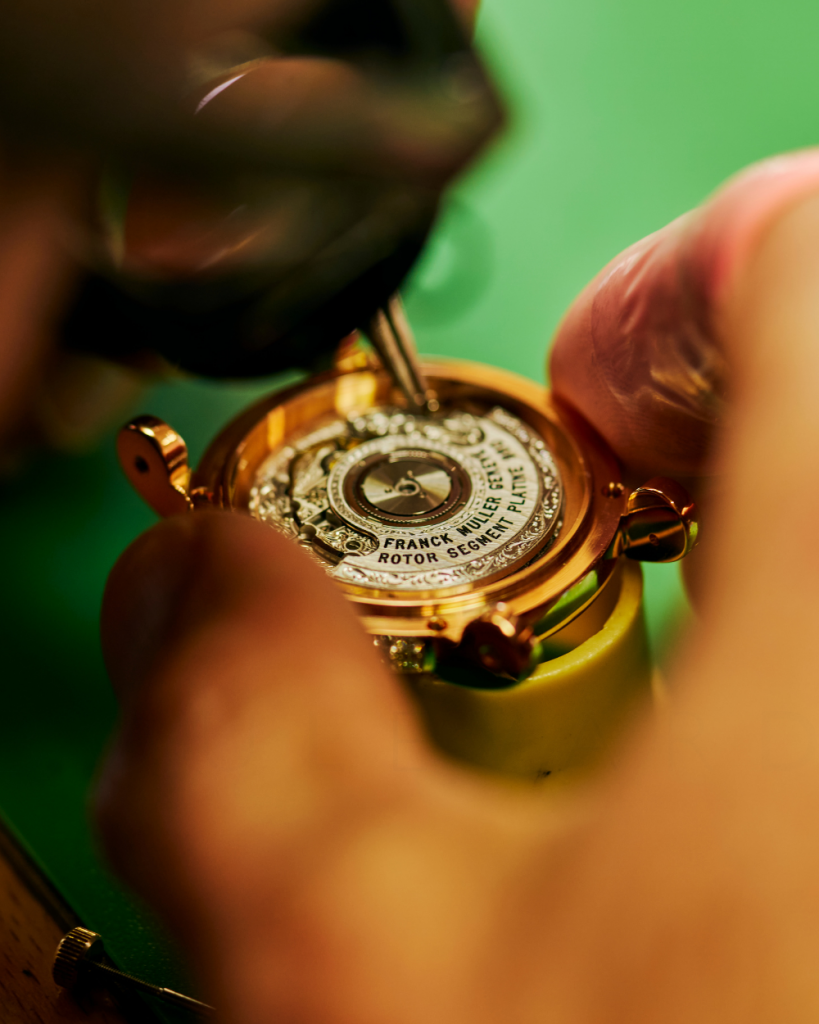
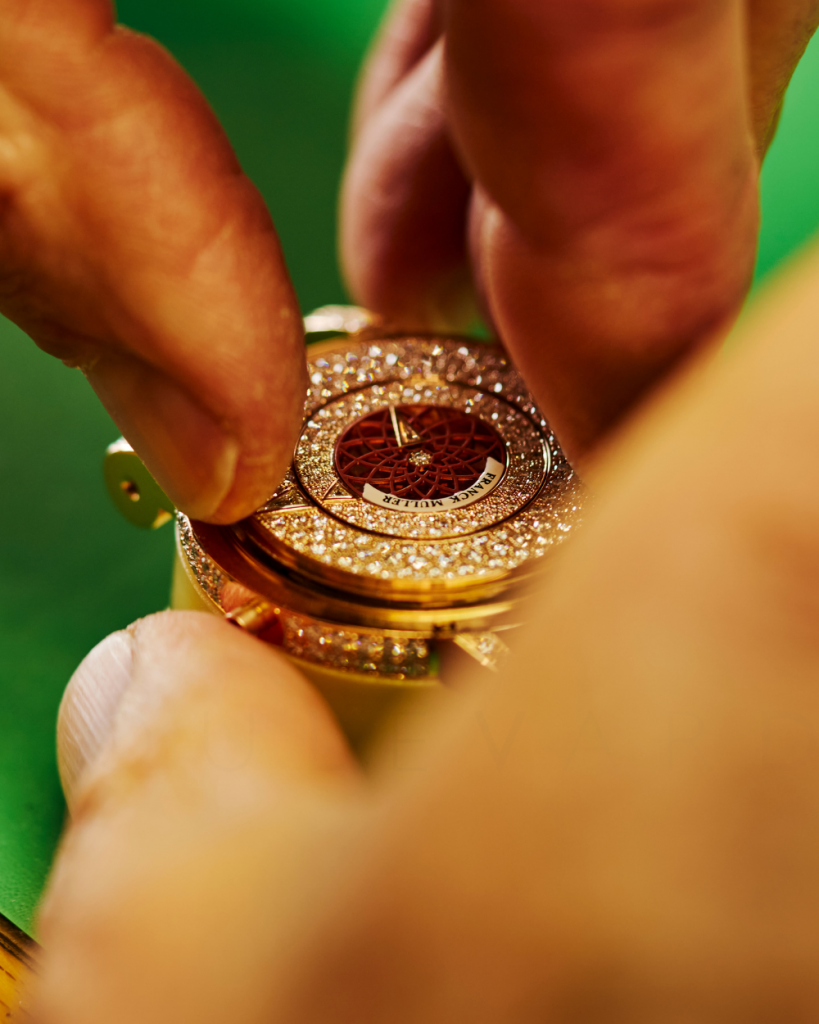
Watchmakers demonstrate the craftsmanship behind the Franck Muller Round Triple Mystery.
Blvd: Where would you say the luxury watch market stands right now, and where do you fit into it?
Rudaz: The luxury watch market has been a bit reduced in the last year—I think this is a global trend affecting all brands. But our strength lies in the fact that we are independent. We don’t rely on making good numbers or improving share value. This allows us to concentrate on the collection, creativity, and on making beautiful complications. Thanks to our creativity, we always find one market performing better than others. So there’s always positive news coming from one country, when looking at it by segments.
“Well, we always like to put that extra je ne sais quoi inside each watch, so people who wear a Franck Muller are those who want to be a little bit different—who want to stand out.”
Blvd: Do you think buyers of today are more focused on brand recognition or are they more interested in the characteristics of the watch?
Rudaz: The buyers’ or collectors’ first objective is to wear the watch with pride and joy. It represents passion and personal pleasure—it’s meant to be worn, not kept in a safe. So there will always be those looking for high complications and others, like ladies, looking for something with quartz and diamonds. There will also be people who are looking for something special, which means that a mechanical movement might suit them best.
In the last year, we’ve also seen that the market is much more interested in smaller watches. That’s why we are presenting the Vanguard 43 and 41, which are much smaller compared to its 45 mm iteration.
Blvd: What are you still learning about watchmaking?
Rudaz: I’m always learning, and I will never consider myself a watchmaker because there is just so much to know—as an engineer, as a designer and as a watchmaker. You need all these different crafts to put a watch together. So, it’s basically a teamwork effort to do so.
Of course, over the years, as we present new complications and designs, I always get to learn a little more about the mechanics of how the wheels function inside the watch.
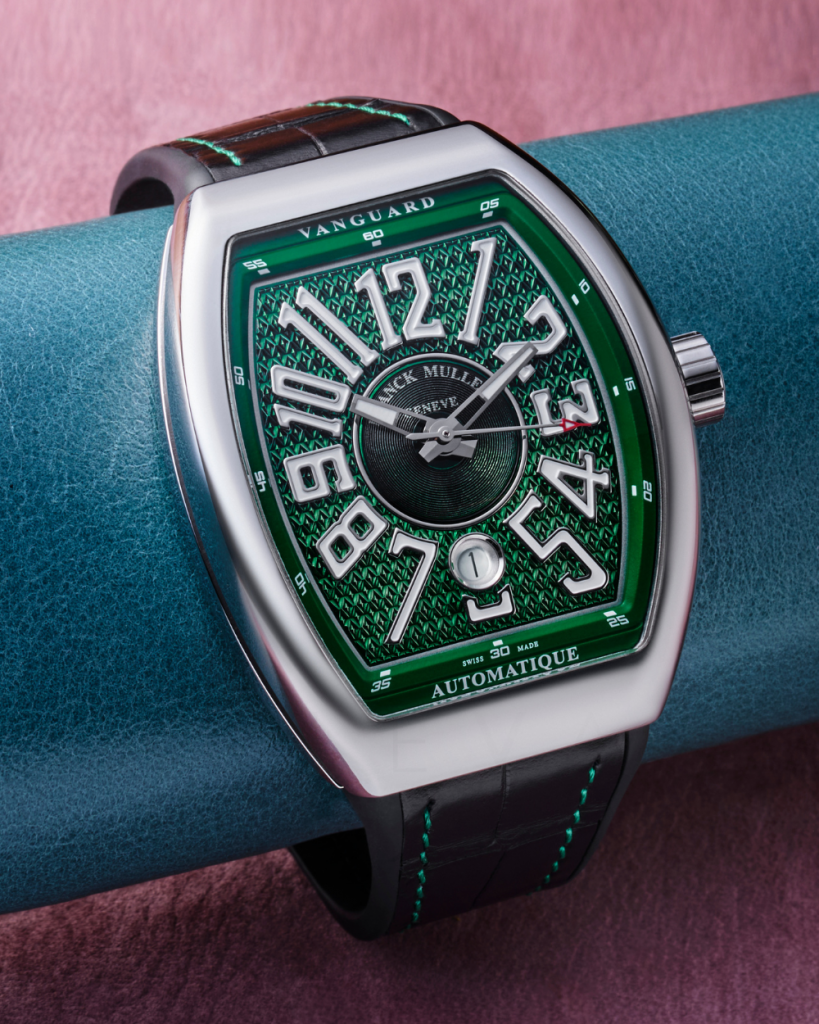

The new guilloché pavé de losange dial in black and green injects fascinating depth into the Vanguard.
I think the fact that we always push the boundaries of watchmaking and constantly discover new complications, new designs and beautiful new pieces is what keeps it exciting. And for each one, there’s always a technical challenge to overcome, to analyze and to find the right ways of putting it all together. But the fact is, not every single design is manageable inside the wristwatch. That can happen, and it just gives us more to think about, more to develop, to hopefully come up with a functioning watch one day.
There are some concepts out there—some art pieces—that are still not technically available. We still need to think about them, still need to find a way of producing them. Just like when we produced the Aeternitas Mega 4, the 36-complication wristwatch, it took us five years to develop. So it’s not an instantaneous process.
“I think the fact that we always push the boundaries of watchmaking and constantly discover new complications, new designs and beautiful new pieces is what keeps it exciting.”
Blvd: Do you know at the beginning of those five years that you’re going to reach the end?
Rudaz: Well, no. You never know because it is so challenging, and it’s never been done before. And that’s why we have a team of wonderful designers, watchmakers and technicians to achieve such projects.
It’s a very creative process. And again, 200 years ago, people were making the watches manually, everything was made by hand, the movements were cut out by hand—and it’s an incredible art to achieve. Today, it’s the same challenges but of course, we have many more tools and innovations to get there and achieve those goals.
Blvd: What does Watchland bring to Franck Muller?
Rudaz: Well, it’s a fascinating watch factory with incredible know-how that overlooks Lake Geneva and Mont Blanc. The architecture is very classic and looks like it’s been there forever. The main building dates back to 1905 and then we added four new buildings based on the existing architecture.
It’s a place where all our distributors from around the world and the journalists come to discover such unique watchmaking process and they also get to see all the green scenery from the Domaine du Grand Malagny, which belongs to us as well. It used to be Geneva’s largest agricultural farm, around 100 acres, which creates a unique setting to present our unique collection.
Go further with the 2025 edition of Watches and Wonders in Geneva.
Read next:

